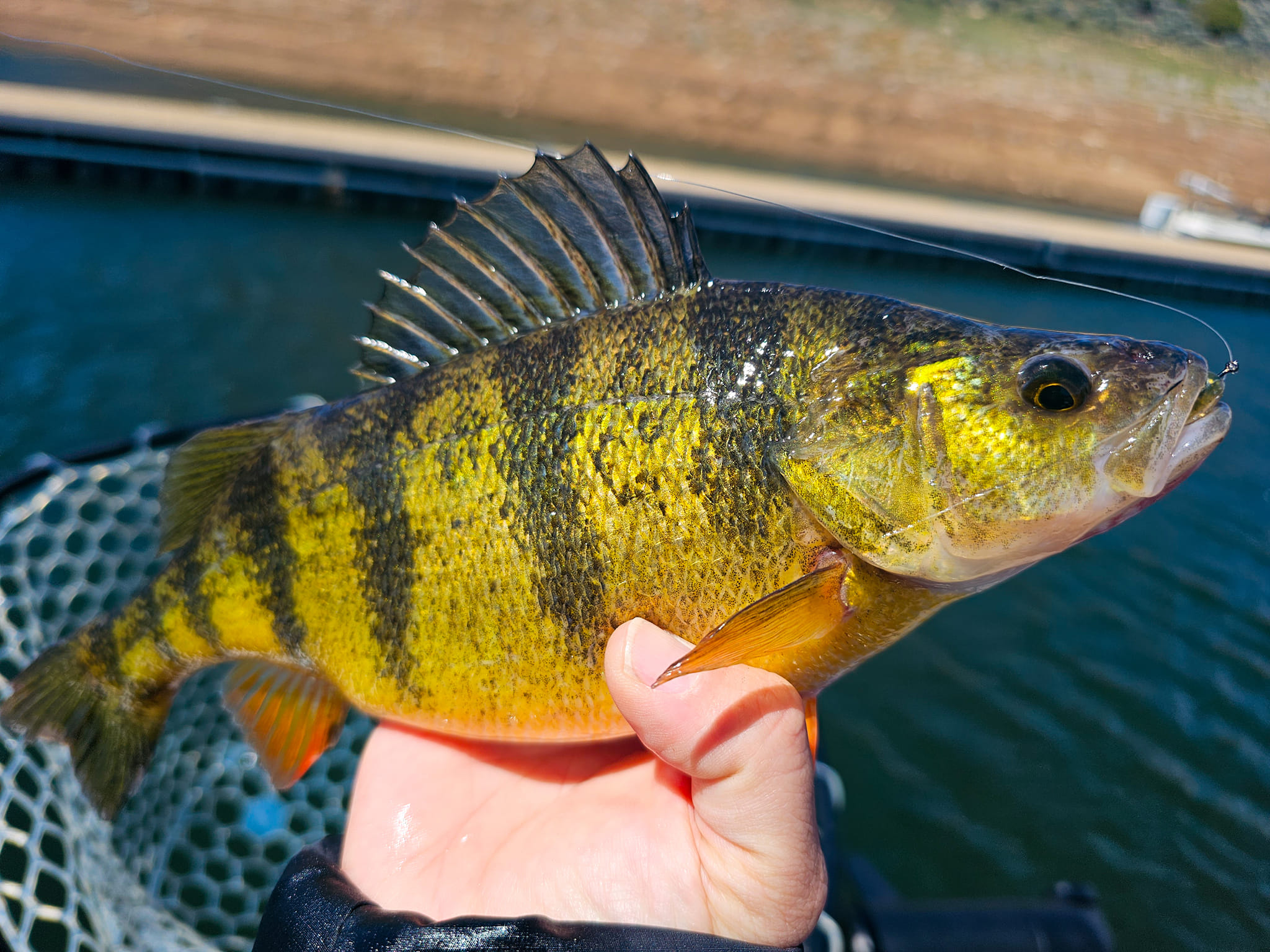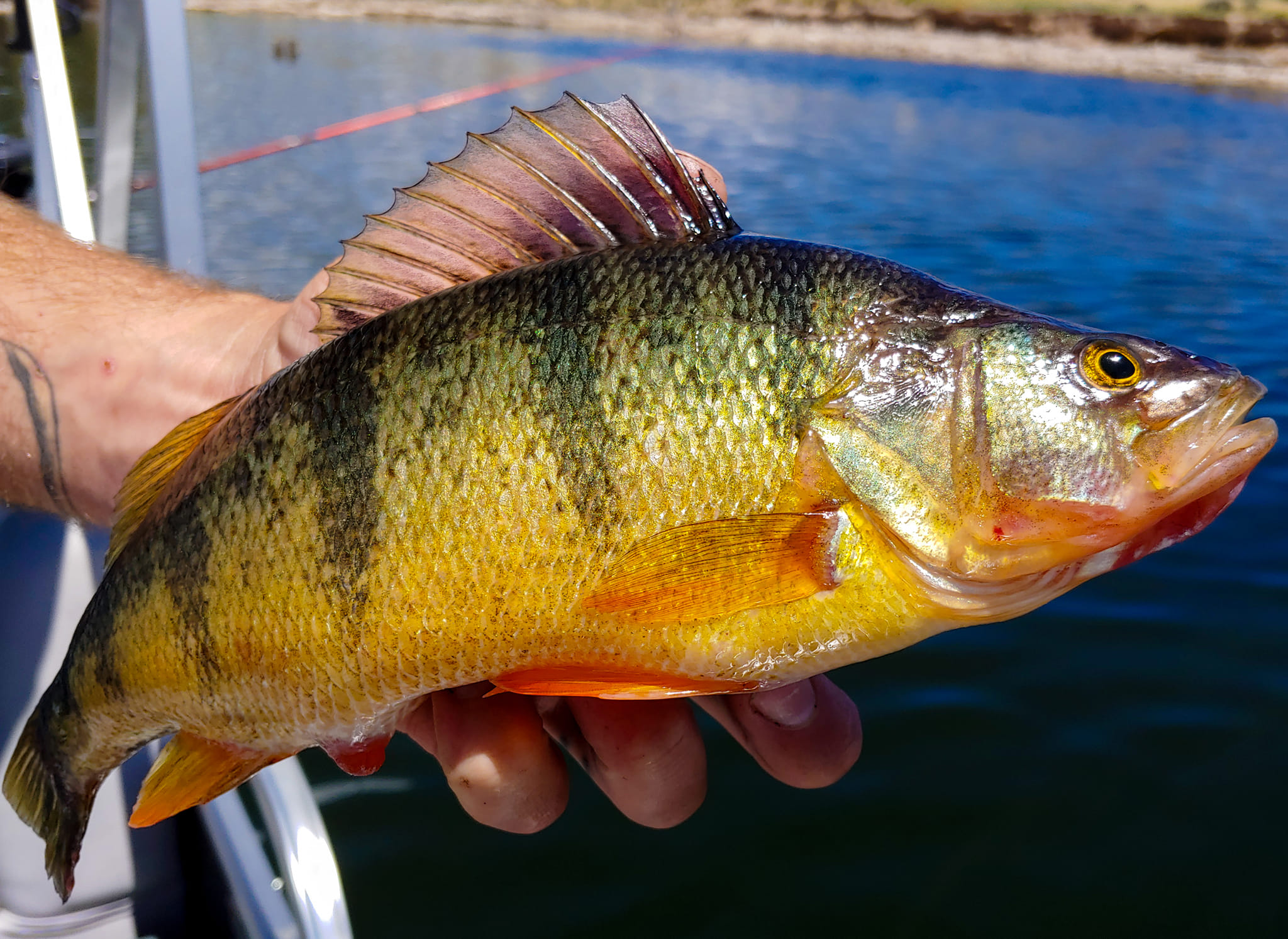We recently reached out to our fishing community on social media, asking if you wanted more perch fishing tips, and the response was a resounding yes! Inspired by your enthusiasm, we’ve put together five tried-and-true tips that have helped us catch more perch and land bigger ones too. Whether you’re a seasoned angler or just starting out, these tips will help you elevate your perch fishing game.

Perch Tip # 1
If possible, keep your jig/lure from resting on the bottom. Although you will catch fish on the bottom, we’ve found that keeping your lure off the bottom by either actively (slowly!) jigging it or using Dropshot or Carolina rigs, helps get more bites. Even holding your lure an inch or two off the bottom can make a big difference!
Perch Tip #2
You don’t have to use cut bait to catch perch. There is nothing wrong with using cut bait but it requires more work overall. Between prepping the bait and re-baiting your hook after every catch. It can be time consuming and cost more in the long run.
Oftentimes, we only use our Fin Candy soft plastics for bait. Finding the bait color that Perch are keying in on ensures that you can catch multiple fish without having to re-bait after every bite. This is extremely important when fishing for roaming schools of Perch that move in and out quickly.
(Our most successful Fin Candy patterns are Olive, Peacock, Fire Tiger, and White Flash.)
Another option when you’re just not getting many bites is adding scent on your Fin Candy/Soft plastic bait. We usually spray or dip the bait once every 20 or 30 casts. This is another time and cost saver in the long run.
Perch Tip #3
Big Perch tend to roam in deeper water and are in groups of 3-10 fish. These schools can be much harder to target because they are always on the move.
If you’re fishing from a boat, unlike smaller Perch that tend to congregate under your boat, larger perch are less tolerable to boat pressure. Using sonar like a Livescope can help you track these roaming schools without having to place your boat directly on top of the fish. We’ve found these schools are highly aggressive, and if you cast into them, you will usually catch one and bring the school closer to you as you reel in.
If you’re fishing from the shoreline, you may notice that your bites come in “waves” where you get several bites or catches and then nothing for a while. This is a good indication that schools of Perch are roaming through the area. Make the most of these short windows by having your rod(s) ready and using lures or soft plastics that you don’t have to re-bait every cast.

Perch Tip #4
Perch prefer fair weather conditions, but they can still be caught on stormy days, although it’s more challenging and the bites are less frequent. Even when there are large schools of Perch, only a few may be actively biting.
To increase your chances, try using bold-colored patterns like Fire Tiger, Peacock, or White. Also, consider adding scent to your lures or soft plastic bait more often.
Overall, be prepared to put in extra effort when fishing in bad weather.

Perch Tip #5
Proper Line Tension: If there is one tip you take away this week, we hope it’s this one!
Relatively speaking, Perch tend to have a light bite (even the giants), and it is extremely difficult to feel their strikes/bites with slack line.
After casting your lure out or dropping it down, lightly reel up the slack and keep light tension on your line. (Your line should be straight no matter the angle at which you cast it.)
If you reel the slack line in too fast, you run the risk of pulling your lure back towards you and out of the strike zone.
When using a dropshot or other weighted rig, cast it away from you, let it sink to the bottom, and then gently reel the slack out of your line. This can be much harder if you’re fishing in the wind, but it’s not impossible. You may have to throw a few test casts to find the proper line tension.
If you’re vertical jigging, your line should be straight below you without any coils. If you see coils that means your lure is resting on the bottom. Lightly reel the slack out of your line until your lure is just off the bottom.
We can’t tell you the number of Perch we have caught simply because we noticed a small twitch in the line, so we set the hook, and it was fish on!
We hope you’ve found these five fishing tips helpful! Be sure to check out our Online Courses as well as our Guided, On The Water Trainings! Visit the Shop section for more information.
